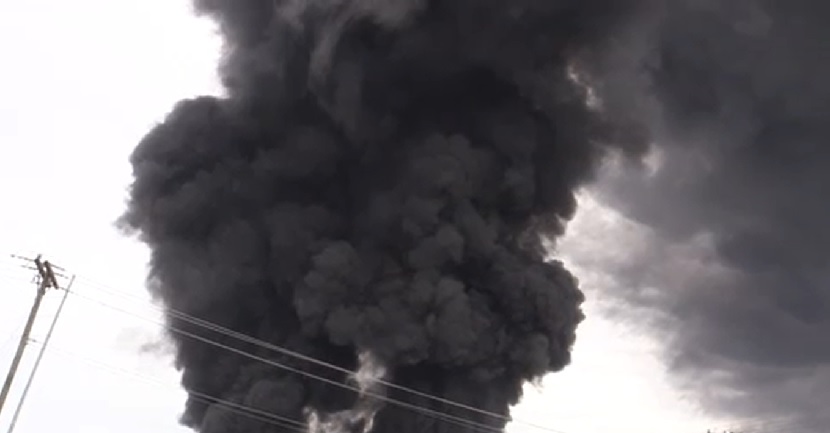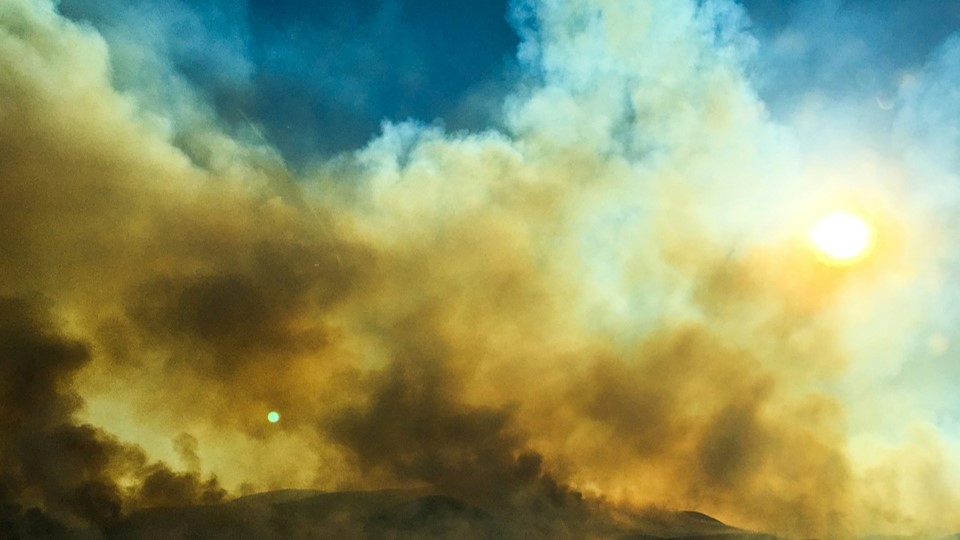“It’s everything you do and nothing that you did.” — Steve Cash
Poly-America is having a bad week.
Last Wednesday, August 19, at around 1 am, a massive fire started at the Poly-America plant in Grand Prairie, Texas, outside of Dallas. Local news reports on that Wednesday stated that the black plume from the fire could be seen for miles and that firefighters expected the fire to continue to burn into Thursday.
This past Monday, August 24, just before dawn, another massive fire started at the Carolina Poly plant in Chester, South Carolina, between Rock Hill and Columbia. Local news reports on that Monday stated that the black plume from the fire could be seen for miles and that firefighters expected the fire to continue to burn into Tuesday.
Poly-America operates Carolina Poly. Poly-America also operates the Poly-West plant in Henderson, Nevada, the Up North Plastics plant in Cottage Grove, Minnesota, and the Pol-Tex reprocessing and scrap service center in Mont Belvieu, Texas. I hope the fire departments in each of those towns are on alert and have plenty of firefighting foam on hand.
Poly-America is having a bad week and the superstitious are quick to tell anyone that will listen that bad things come in threes.
Facility Siting?
The first reporting out of Grand Prairie suggested that the cause of the Texas fire was well understood. Rolls of polyethylene sheeting stored in large piles under high-voltage wires caught fire when one of the high-voltage wires broke loose during severe weather, fell onto the polyethylene, and ignited the tenaciously combustible material.
The lesson for all of us? Don’t store combustible solids (or for that matter, flammable liquids or gases) under high-voltage wires, no matter how much space is available around those pylons or under those cables.
Except that’s not what happened.
So, What Happened?
A week later, officials are uncertain about what happened in Grand Prairie. Oncor, the utility company operating the high-voltage lines, reported that their lines were operating normally when the fire started. Time-stamps on the power failures and photographs (and with cameras built into everyone’s phone, there are lots of photographs), now make it clear that the fire caused the high-voltage lines to come down, rather than the high-voltage lines that caused the fire. Fire department investigators have reportedly ruled out downed high-voltage lines as the cause of the fire.
Investigators don’t know what caused the Grand Prairie polyethylene fire and it is still under investigation.
Meanwhile…
Even as the Grand Prairie investigation proceeded and the clean-up of the Grand Prairie fire was under way, a fire at another Poly-America facility broke out, this time at the Carolina Poly plant in Chester, South Carolina. While the Texas fire involved polyethylene sheet, the South Carolina fire reportedly involved plastics, wooden pallets, tires, and drums of oily material. Fire investigators in South Carolina have not been willing to speculate on the cause of the fire, simply reporting that “the cause of the fire has not been determined.”

Photo credit: Still from video posted by the Rock Hill Herald, heroldonline.com
Meanwhile, the fire in Grand Prairie has been deemed sufficiently suspicious that agents from the Bureau of Alcohol, Tobacco, Firearms, and Explosives are assisting fire investigators with the Grand Prairie Fire Department with their probe into the cause of the fire.
No Fatalities
Neither fire, both described as “massive”, resulted in fatalities. It helps that the Texas fire began at around 1 am, the South Carolina fire at around 6 am. If these two fires were arson, it appears that the arsonists didn’t want to add murder to their list of crimes. There were also no injuries at the Texas fire. There were five incidental injuries to firefighters at the South Carolina fire: a foot injury and four heat-related injuries.
That doesn’t mean there was no harm.
Black Skies
The combustion products of polyethylene pyrolysis include “a range of saturated and unsaturated hydrocarbons from C2 to C23 which [do] not vary greatly in product ratio with conditions.” Oxidation products include “acetone, acetaldehyde, acetic acid and a small amount of acrolein”, but the amounts and concentration depend a great deal on conditions. EPA testing has found a variety of these organic compounds, but not at alarming concentrations.
What the EPA has found at both fires, which should be absolutely no surprise given the thick black smoke, is dangerously high levels of particulate matter. The levels are so high that officials at both locations have warned people with pre-existing respiratory or coronary conditions to shelter in place or evacuate the area in order to avoid breathing the smoke.
Environmentalists have also raised grave concerns about the firewater runoff, containing foaming agents such as PFAS (perfluoroalkyl and polyfluoroalkyl substances), as many do. The concern is that these PFAS are “notoriously persistent in the environment” and bioaccumulative.
What Can We Learn from This?
It should go without saying that initial reports are rarely correct or complete. It is always tempting to confuse conclusions with facts. Both may be true, but facts remain true, even when new facts are introduced, while conclusions can and often should change with new facts. However, we have to draw conclusions to develop recommendations, and we have to implement recommendations to make improvements. That said, we still need to wait long enough for all the facts before we can draw the conclusions that will lead to good recommendations.
Regardless of the specifics of these incidents, though, there are general issues we should all consider. Are we prepared for a fire, no matter what its cause is? Are our first responders? Do they know what we have, and do they have the gear and equipment to respond? Most firefighters have a good understanding of the combustion products of wood and other ordinary building materials, but do they understand the combustions products of what we have?
Likewise, do we know what our firefighters have? When the environmental activists get upset about the release of PFAS or contaminated fire water to the environment, they are not going to direct their ire at the fire department; they’re going to be angry with you.
It’s Everything You Do
Every time a process incident makes the national news, most of us find ourselves thinking something along the line of, “There, but for the grace of God, go I.” Let’s not simply count on grace. These incidents should give us a reason to think once again about our emergency action plans. Let’s make sure that we too emerge from the other side of a catastrophic fire with no fatalities and no injuries. Rest assured, you will be judged. Arson or not, “it’s everything you do and nothing that you did.”
